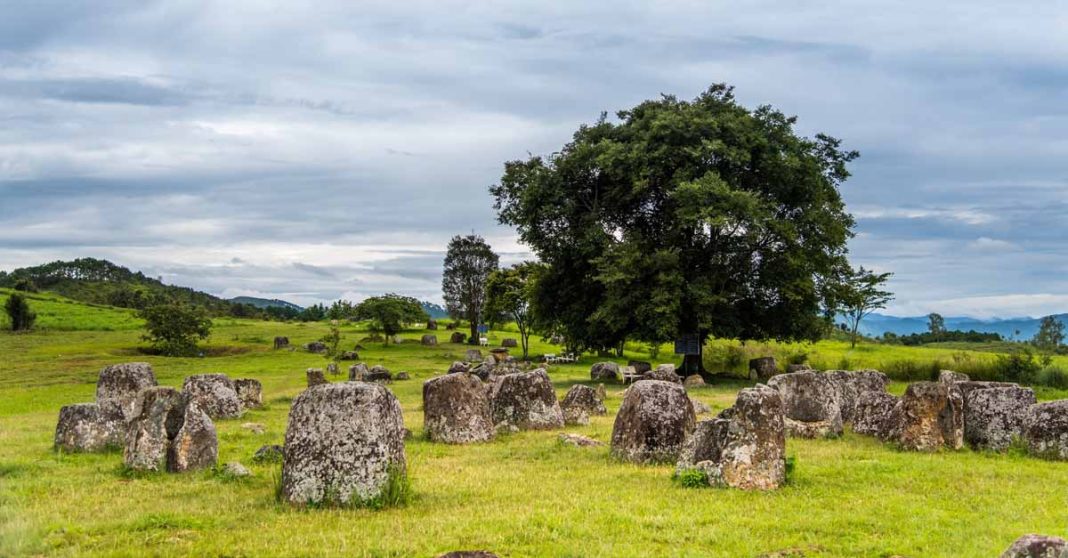The recently-announced concession of the Plain of Jars sites will help improve tourism facilities and attract more visitors, says the developer, who plans to upgrade the scenery of the sites with cherry blossoms, among other initiatives.
Two sites within the UNESCO World Heritage-listed Plain of Jars will be developed by the Vientiane-based private mining company CNP Group, which signed an MOU for a feasibility study last week with Xieng Khouang Provincial Department of Planning and Investment, for a concession on the management of the sites.
President of CNP Exploration and Mining Import-Export, Ms. Channapha Vongsamoraphoum, says that the company wants to plant over 1,000 cherry blossom trees to beautify the area.
According to a statement from the Head of the Planning and Investment Department in Xieng Khoung, Mr. Khamphouy Nola, the company will be allowed to develop Site 2 and Site 3. This will include the development of tourism activities, transportation services, and other facilities.
Under UNESCO regulations, Site 1, the largest area in the Plains of Jars, comprising 33,97 hectares, will remain unchanged, while landscaped gardens, ethnic-style houses, and restaurants will be added to the list of permitted sites.
But tourism stakeholders are skeptical about the plans after witnessing the negative effects of similar concessions given to local companies at other tourism sites in the past.
Chris Mulder, a long-time tourism expert based in Laos, has expressed concern over the construction activities being planned by a private company that will be granted the concession, as the natural beauty of the area will be lost to future generations.
“The Plain of Jars are heritage sites, building all sorts of attractions, hotels, restaurants, etc will take away a huge amount of authenticity from the place,” he says. “It is also questionable how the government of Laos will maintain the sites after the expiry of the concession as well.”
He feels the government of Laos should set up a separate organization to manage tourism with the authority to monitor concessions in tourism-related issues, also involving young tourism professionals in Laos, who can bring a fresh perspective on such matters.
Another tourism expert who spoke with Laotian Times but who asked not to be named said that since tourist sites in Laos are relatively small, private companies need not be brought in to develop and run them.
“If anything, the area needs to be made more accessible as traveling to Phonsavanh is quite an expensive and uncomfortable affair at the moment. When it comes to the site itself, perhaps a bit more of the money they make from entrance fees should be put into maintenance – toilets especially – but a private company doesn’t need to come in just for that,” he adds.
Stakeholders have said that the government must consider long-term impacts before allowing a private company to develop tourism sites in Laos as the country is still in a nascent stage of tourism development.
Before granting concessions to developers, the government needs to weigh the impacts of tourism sites on the environment and the future of tourism and ensure that locals will be able to generate income at the sites without difficulty.
In June this year, Luang Prabang considered offering a concession of Pak Ou Caves to a private company for the development of tourism activities and other facilities.



